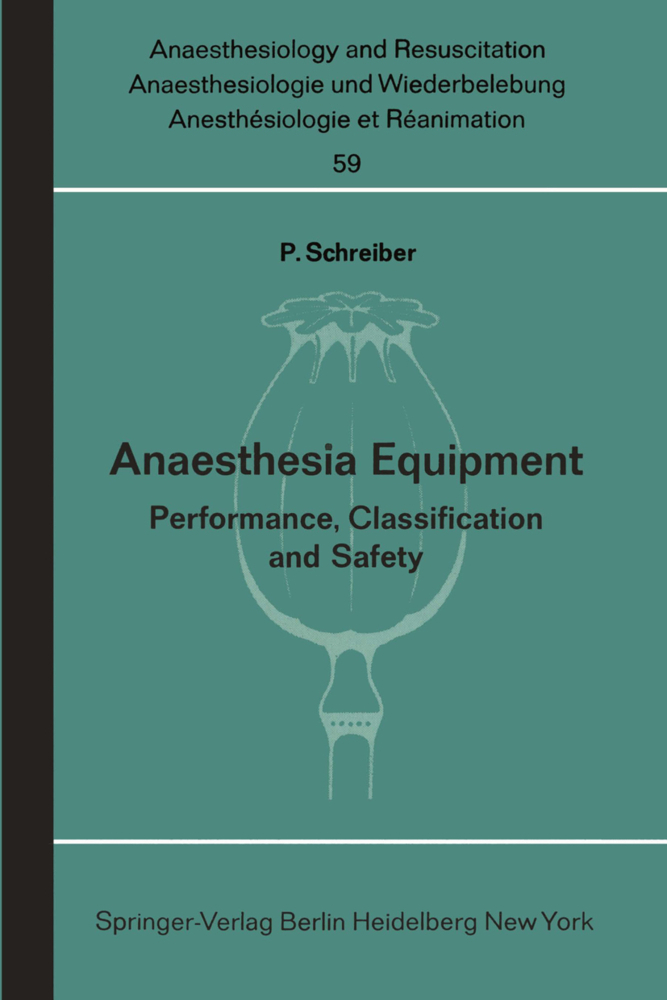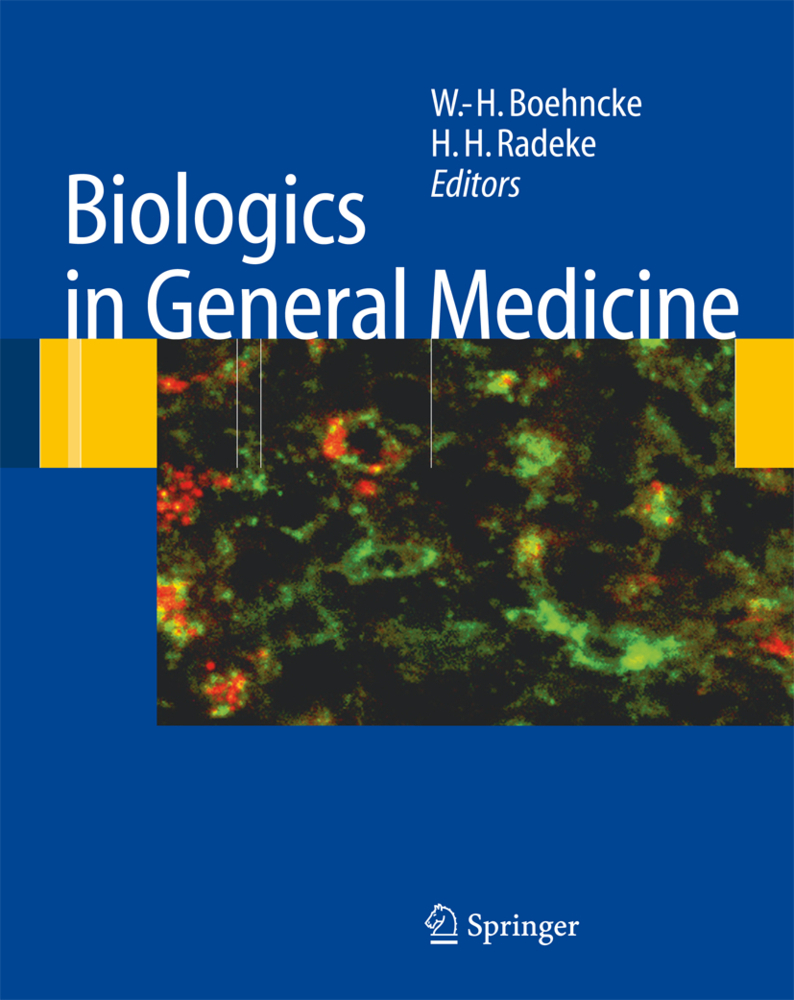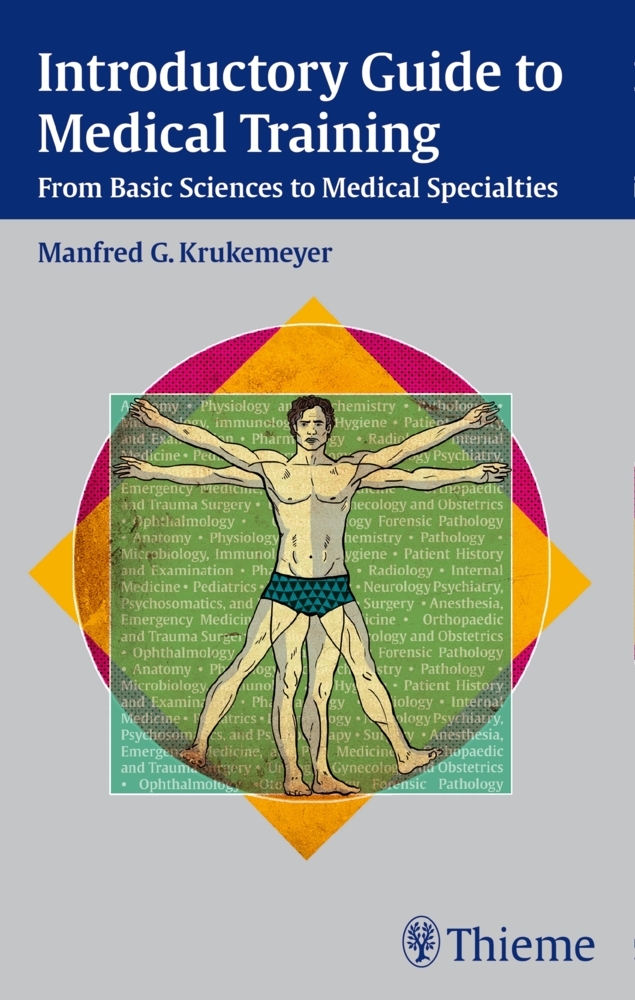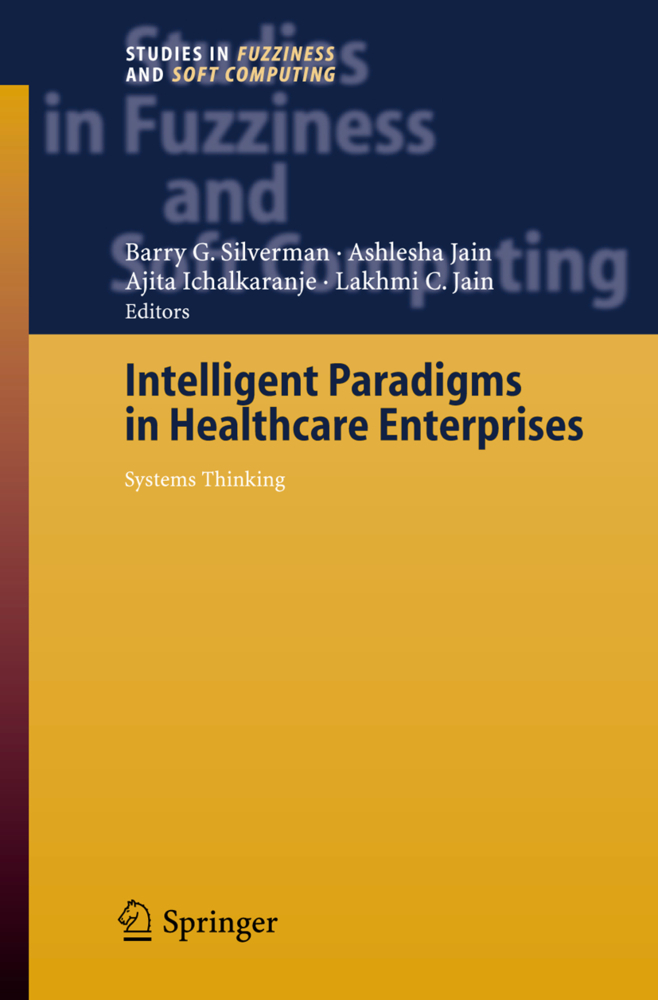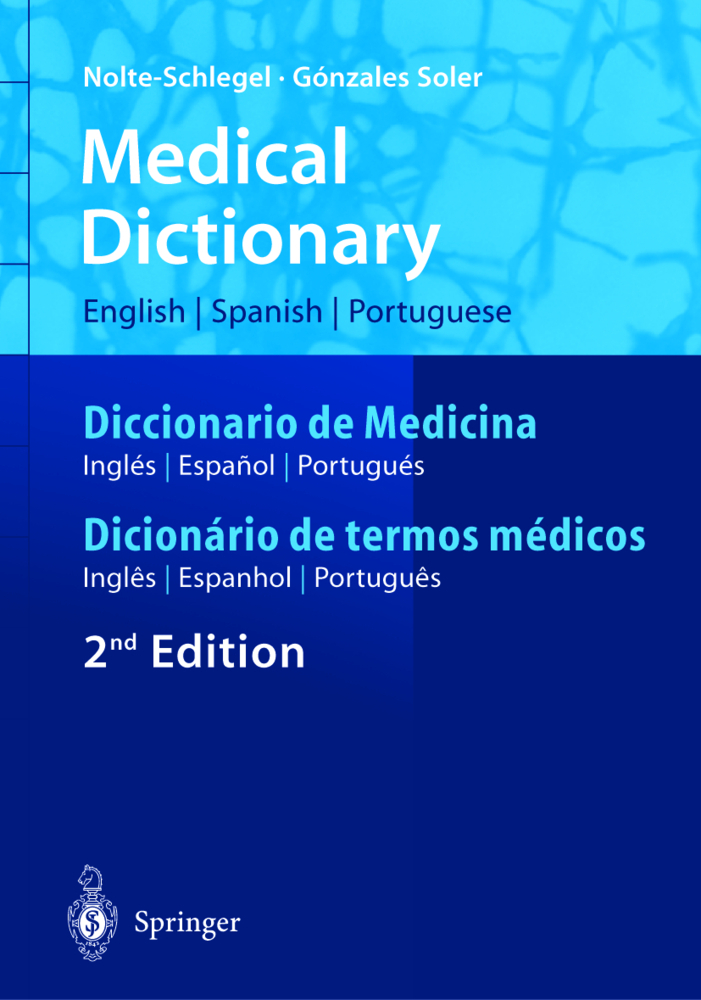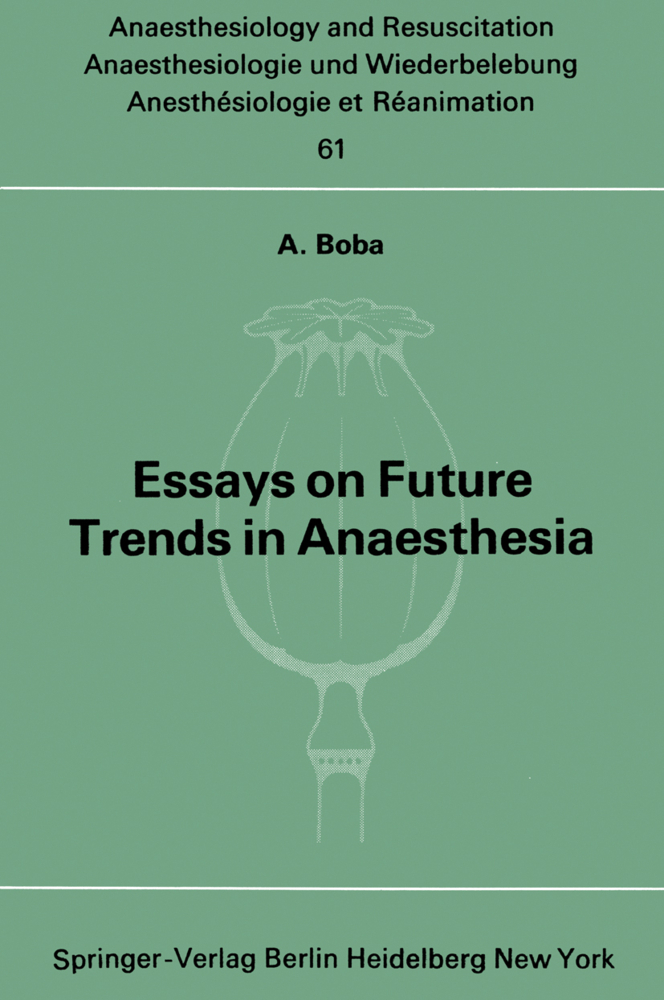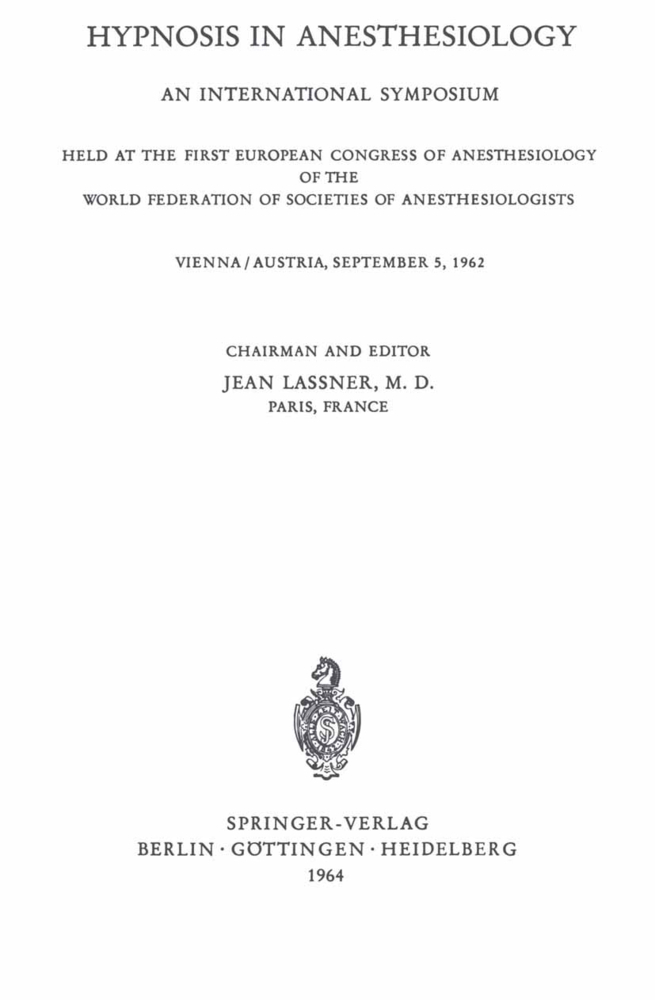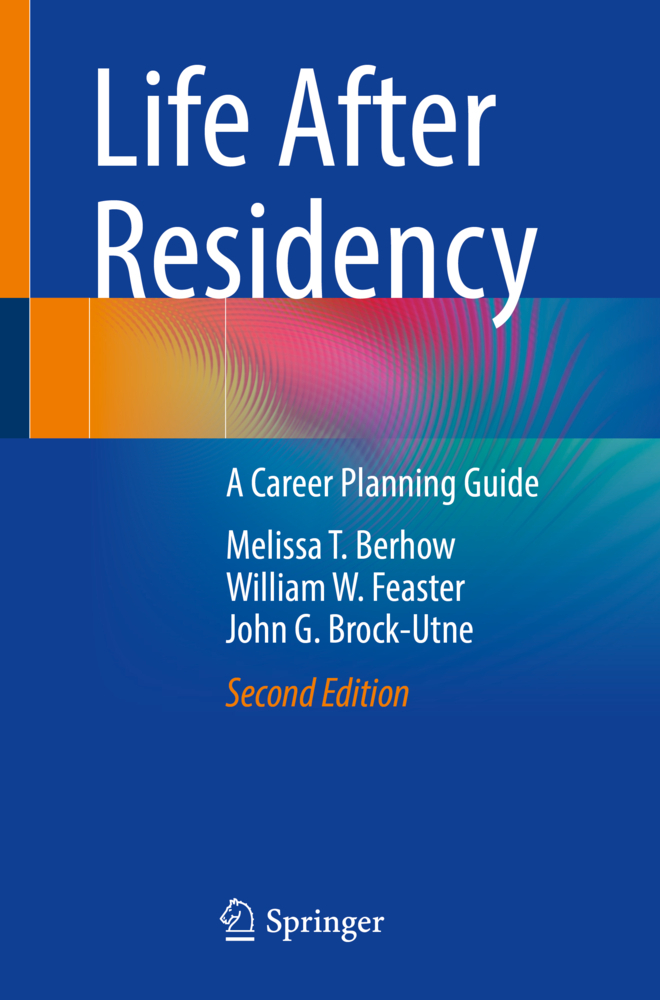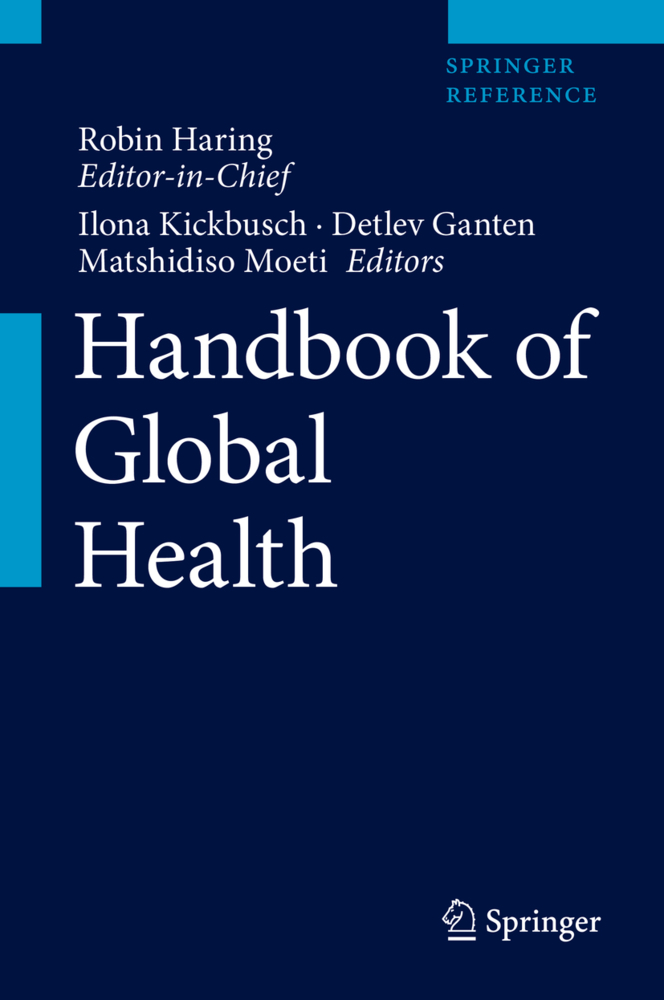Anaesthesia Equipment
Performance, Classification and Safety
Anaesthesia Equipment
Performance, Classification and Safety
During the recent years the basic sciences have become a major stimulant toward progress in medicine. Technique itself plays a vital role in today's medicine. With the increasing complexity of equipment, hazards related to malfunction and misuse have grown proportionally. The machine used with insufficient knowledge could become a deadly instrument. The basic elements of the anaesthesia machine, their design, and the physical basis for their function is discussed in the monography by the engineer, Peter 1. Schreiber. His knowledge is based upon fifteen years experience in the medical equipment industry in both Germany and the United States as well as his teaching activities in various medical schools. Detailed knowledge of equipment and the related physical laws has gained increasing importance in the training of anaesthesiologists. Fundamental knowledge of the design, function, and performance of an anaesthesia machine is the key to the art of its use. Mainz/Rhine, December 1971 Dr. RUDOLF FREY, F.F.A.R.C.S. Professor of Anaesthesiology Johannes Gutenberg-University Acknowledgements I wish to thank Dr. STANLEY W. WEITZNER, Professor, Department of Anesthesiology, State University of New York, Downstate Medical Center, for his helpful criticism of the chapter dealing with the per formance and classification of ventilators. I also want to thank Mr. DAVID F. BOERNER for his assistance in rewording the language and physiochemical terminology of the manu script.
Safety Relief Devices
Cylinder Valve Outlets
Properties of Medical Gases
Liquefied and Nonliquefied Gases
Vapor Pressure Curves of Liquefied Gases
Rules for Safe Use, Storage and Handling of Gas Cylinders
References
2. Pressure and Pressure Gauges
Units of Pressure
Kinds of Pressure
Pressure Gauge Classification
References
3. Pressure Regulators
Performance
Functions
Fire Hazard and Freezing Problems
Safety Relief Valve
References
4. Piping Systems of Anaesthesia Machines
Connections of Gas Supply
Failsafe System
Oxygen Pressure Failure Alarm Devices
Oxygen Flush
References
5. Flow Control Valves
Designs
Performance
Safety Considerations
References
6. Flowmeters
Principle of Function
Marking of Flowmeters
Maximum Error
Flowmeter Manifold and Flowmeter Sequence
References
7. Out-of-Circuit Vaporizers
Properties of Liquid Anaesthetics
Vapor Pressure Curves and Saturation Concentration
Consumption of Anaesthetics
Comparison of the Designation Vol.-% and mg/l
Basic Design Characteristics of Vaporizers
The Effect of Flow Upon the Output Performance
The Effect of Temperature Upon Output Performance
The Pumping Effect
The Effect of Barometric Pressure Upon Output Performance
Safety Requirements and Hazards
Dose Regulated Anaesthesia
References
8. Anaesthesia Breathing Systems
Classification
Non-Rebreathing Valves
T- Pieces
Magill Systems
To and Fro Systems
Circle Systems
Absorbers
Directional Valves
Relief Valves
Corrugated Hoses
Breathing Bags
Designs of Circle Systems
Oxygen Concentration within the System
Efficiency of Circle Systems
Inside of Circuit Vaporizers
Meters for Measuring Concentrations of Anaesthetics
Bacteria Filters
Humidification
Respiratory Meters
Meters for Measuring Oxygen Concentration
Circulators
References
9. Ventilators
Terminology
Mathematical Aspects
Diagrams
Classifications
Flow Pattern
Volume Constancy of Ventilators
Controls and Control Combinations
Anaesthesia Breathing System and Ventilator Combinations
References
Summary
Zusammenfassung
Appendix (List of Equipment).
1. Gas Cylinders and Medical Gases
Cylinder MarkingSafety Relief Devices
Cylinder Valve Outlets
Properties of Medical Gases
Liquefied and Nonliquefied Gases
Vapor Pressure Curves of Liquefied Gases
Rules for Safe Use, Storage and Handling of Gas Cylinders
References
2. Pressure and Pressure Gauges
Units of Pressure
Kinds of Pressure
Pressure Gauge Classification
References
3. Pressure Regulators
Performance
Functions
Fire Hazard and Freezing Problems
Safety Relief Valve
References
4. Piping Systems of Anaesthesia Machines
Connections of Gas Supply
Failsafe System
Oxygen Pressure Failure Alarm Devices
Oxygen Flush
References
5. Flow Control Valves
Designs
Performance
Safety Considerations
References
6. Flowmeters
Principle of Function
Marking of Flowmeters
Maximum Error
Flowmeter Manifold and Flowmeter Sequence
References
7. Out-of-Circuit Vaporizers
Properties of Liquid Anaesthetics
Vapor Pressure Curves and Saturation Concentration
Consumption of Anaesthetics
Comparison of the Designation Vol.-% and mg/l
Basic Design Characteristics of Vaporizers
The Effect of Flow Upon the Output Performance
The Effect of Temperature Upon Output Performance
The Pumping Effect
The Effect of Barometric Pressure Upon Output Performance
Safety Requirements and Hazards
Dose Regulated Anaesthesia
References
8. Anaesthesia Breathing Systems
Classification
Non-Rebreathing Valves
T- Pieces
Magill Systems
To and Fro Systems
Circle Systems
Absorbers
Directional Valves
Relief Valves
Corrugated Hoses
Breathing Bags
Designs of Circle Systems
Oxygen Concentration within the System
Efficiency of Circle Systems
Inside of Circuit Vaporizers
Meters for Measuring Concentrations of Anaesthetics
Bacteria Filters
Humidification
Respiratory Meters
Meters for Measuring Oxygen Concentration
Circulators
References
9. Ventilators
Terminology
Mathematical Aspects
Diagrams
Classifications
Flow Pattern
Volume Constancy of Ventilators
Controls and Control Combinations
Anaesthesia Breathing System and Ventilator Combinations
References
Summary
Zusammenfassung
Appendix (List of Equipment).
Schreiber, P.
| ISBN | 978-3-540-05624-9 |
|---|---|
| Medientyp | Buch |
| Copyrightjahr | 1972 |
| Verlag | Springer, Berlin |
| Umfang | XII, 222 Seiten |
| Sprache | Englisch |

